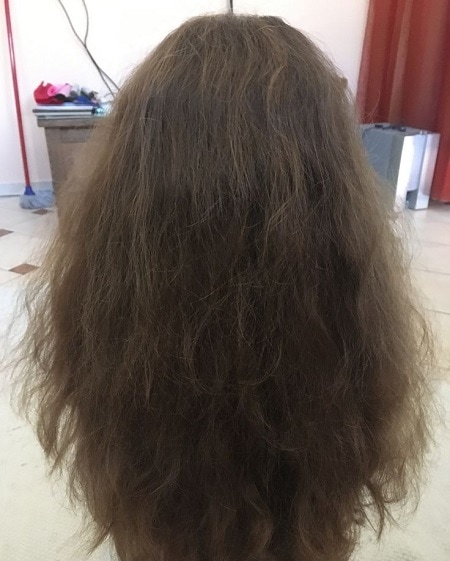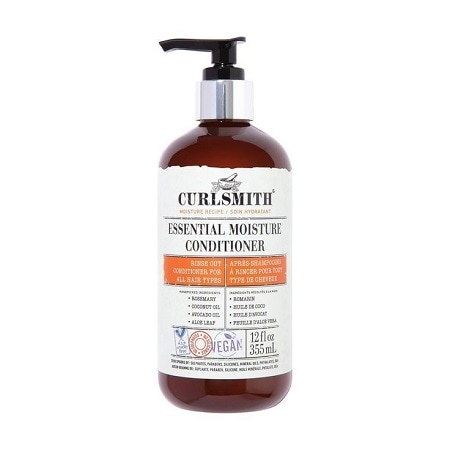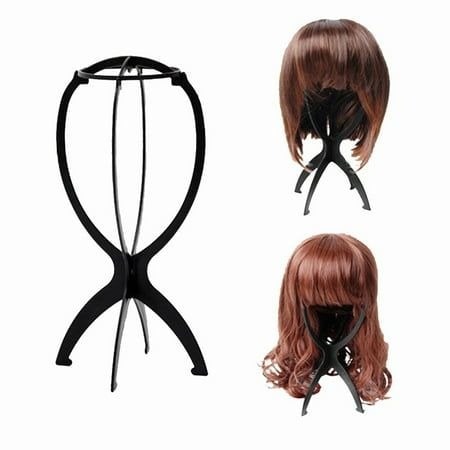How to Fix a Frizzy Human Hair Wig?
Wigs can instantly elevate your style, whether you prefer a sleek bob or bouncy curls. However, frizz can be a frustrating issue, even with high-quality human hair wigs. Don't fret! We have straightforward, effective solutions to help restore your wig's smooth, beautiful appearance. Let's get started!
Why is My Human Hair Wig Frizzy?
There are several reasons why human hair wigs can become frizzy. The following are the most typical reasons for wig frizz:

Source: Pinterest
Quality of the Wig
Lower-quality human hair wigs are frequently processed less meticulously, giving them a rougher texture that is more prone to frizz.
Lack of Moisture
Like natural hair, a human hair wig needs moisture to be hydrated and silky. It may get frizzy and dry if it isn't properly hydrated.
Heat Damage
Overuse of heat-styling tools, like blow dryers, curling irons, and flat irons, can harm the hair's cuticle and cause frizz.
Improper Washing or Conditioning
Frequent washing, harsh shampoos, or inadequate conditioning can strip your wig of essential oils, causing frizz.
Exposure to Humidity
Humid weather can cause frizz in both natural hair and human hair wigs, as moisture in the air makes the hair swell and become unruly.
Over-brushing or Tangles
Harsh brushing or improper detangling of the wig can cause breakage and frizz.
Exposure to Chemicals
Regular exposure to chemicals like chlorine from pools or alcohol-based styling products can dry out and damage wigs, causing frizz.
How to Fix a Frizzy Human Hair Wig?
Restoring the natural texture and shine of a frizzy human hair wig requires a careful approach. Here’s a guide to help you achieve a smoother finish:
Give It a Gentle Wash
If your wig is frizzy, start by giving it a good wash. Just like your own hair, a wig needs a good cleaning to get rid of dirt, oils, and other things that can make it frizz. Here’s how you can do it:
Shampoo: Apply a sulfate-free shampoo to gently clean the wig without stripping its natural moisture.
Condition: Follow up with a nourishing conditioner, concentrating on the ends to avoid tangling and breakage. Leave it on for 5–10 minutes for optimal hydration.
Rinse Thoroughly: Ensure all conditioner is rinsed out to avoid a dull, heavy finish.
Condition Like a Pro

Source: Pinterest
Conditioning is essential for maintaining a silky smooth and frizz-free wig. Apply a generous amount of moisturizing conditioner specifically designed for human hair wigs, concentrating on the ends where frizz is most apparent.
Detangle Gently
After washing, your wig may have some tangles. Use a wide-tooth comb or your fingers to gently detangle it, starting from the ends and working your way up to prevent pulling or breaking the strands.
Use Heat, But Don’t Overdo It
Once your wig is dry and detangled, use moderate heat to smooth frizz. A blow dryer on low or a gentle flat iron can work wonders without causing damage. Always use a heat-protectant spray!
Add a Serum or Oil
For a shiny finish, use a few drops of hair serum or light oil on the ends to lock in moisture and reduce frizz. Use sparingly to prevent greasiness.
Store It Properly

Source: Pinterest
To prevent future frizz, store your wig properly when not in use. Avoid tossing it on a chair or cramming it into a drawer. Instead, invest in a wig stand or mannequin head to maintain its shape and keep it tangle-free.
Regular Maintenance Is Key
Like your natural hair, your human hair wig requires regular maintenance. Schedule routine washes, conditioning, and occasional trims to maintain its fresh, frizz-free appearance. If it gets unruly, consider a professional trim to remove split ends.
Conclusion
With these simple tips and a little bit of patience, you can transform your frizzy human hair wig into a smooth, glossy masterpiece. Therefore, don't worry the next time you see any frizz slipping in. Simply gather your materials, adhere to these instructions, and you will soon be wearing a smooth, silky wig that matches your style perfectly.
